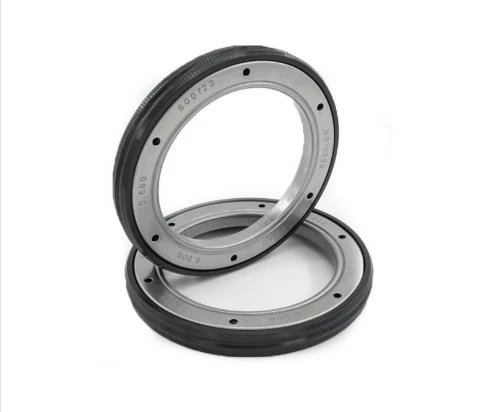Understanding Axle Tube Seal Maintenance and Its Importance for Vehicle Performance
Understanding Axle Tube Seals Importance and Maintenance
Axle tube seals play a critical role in ensuring the proper functioning of vehicles, especially those that operate under demanding conditions. These seals are essential components of the axle assembly, designed to prevent the leakage of lubricants and contaminants from entering or exiting the axle tube. Understanding their operation, significance, and maintenance can aid vehicle owners and mechanics in prolonging the lifespan of their automotive systems.
What is an Axle Tube Seal?
An axle tube seal, sometimes referred to as a differential seal or axle shaft seal, is typically made of rubber or synthetic materials. It fits snugly around the axle tube and serves to seal the space between the axle shaft and the tube. When the vehicle is in motion, this seal keeps lubricants contained within the axle assembly, ensuring proper lubrication of moving parts such as gears and bearings. Additionally, it prevents dirt, water, and other contaminants from entering the axle, which can cause significant damage over time.
The Importance of Axle Tube Seals
The axle tube seals are crucial for the health of the vehicle’s drivetrain. Without a proper seal, lubricant can leak out, leading to a decrease in lubrication and ultimately causing the gears to wear prematurely. This can result in more severe mechanical failures and expensive repairs. Furthermore, the ingress of dirt and moisture can lead to corrosion and rust, exacerbating wear and tear on axle components.
In off-road vehicles or those used in harsh environments, the importance of axle tube seals cannot be overstated. These seals work overtime to fend off the elements, ensuring that the internal environment of the axle remains clean and well-lubricated. It is essential for maintaining the performance, safety, and longevity of the vehicle.
Signs of Worn or Damaged Axle Tube Seals
Recognizing the signs of worn or damaged axle tube seals is vital for vehicle maintenance. The most apparent indication is a visible oil leak around the wheel hub or the axle assembly. Other signs include abnormal noises, such as grinding or humming sounds coming from the differential, which can indicate that the lubricant is not adequately protecting the internal components.
axle tube seal

If you notice any signs of leakage or hear unusual noises from your vehicle, it is advisable to inspect the axle tube seals promptly. Ignoring these signs can lead to more significant damage and hefty repair bills down the road.
Maintenance Tips for Axle Tube Seals
1. Regular Inspections It is good practice to check axle tube seals during routine maintenance. Look for signs of cracking, wear, or fluid leakage. This proactive approach can catch issues before they escalate.
2. Proper Lubrication Ensure that the axle assembly is filled with the appropriate lubricant. Over-filling or under-filling can stress the seals and lead to failure.
3. Driving Conditions Awareness If you frequently drive in harsh conditions, such as off-roading or in areas with heavy rain, consider checking the seals more frequently. These environments can put additional strain on the seals.
4. Replacement When Necessary If there are signs of damage or leaks, replace the seals promptly. While it may seem like a minor issue, replacing a worn seal is far less expensive than repairing damage caused by a lack of lubrication.
5. Professional Help If you are unsure about the condition of your axle tube seals, consulting a professional mechanic is wise. They can provide an accurate diagnosis and recommend necessary repairs or replacements.
Conclusion
In conclusion, axle tube seals are vital components that contribute significantly to the overall health of your vehicle’s axle assembly. By understanding their importance, recognizing the signs of wear and tear, and following proper maintenance guidelines, vehicle owners can ensure that their vehicles operate efficiently and safely. Regular care and timely replacements can go a long way in enhancing the lifespan of these critical seals, thereby safeguarding the vehicle's performance and reducing the risk of costly repairs.
-
The Ultimate Guide to Boat Propeller Bearings and Trailer Wheel Bearings
News Jul.31,2025
-
The Essential Guide to Marine Bearings and Boat Trailer Wheel Bearings
News Jul.31,2025
-
The Complete Guide to Heavy Duty Seals: Protecting Doors and Spaces Efficiently
News Jul.31,2025
-
Essential Guide to Marine Shaft Bearings and Boat Trailer Axle Bearings
News Jul.31,2025
-
Comprehensive Guide to Marine and Trailer Bearings for Safe Boating and Transport
News Jul.31,2025
-
Comprehensive Guide to Automotive Oil Seals: Protecting Your Engine and Shafts
News Jul.31,2025
-
Understanding Automotive Oil Seals: Essential Components for Engine and Shaft Protection
News Jul.30,2025
Products categories















